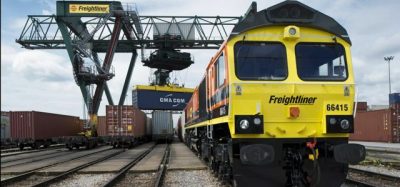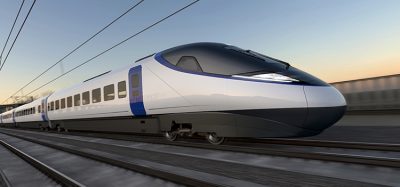CFL: the railway network in the centre of Europe
Posted: 15 February 2011 | | No comments yet
Strategically placed in the centre of Europe, Luxembourg’s railway network attracts, through the combined efforts of CFL and its freight subsidiaries CFL cargo and CFL Multimodal, important quantities of both passenger and freight traffic. Concerning freight transport, Luxembourg was no stranger to the effects the financial crisis had on the world. By and large, heavy industry transported less products and raw materials throughout the last two years. Still, the CFL freight operators were able to compensate for the losses by recruiting a variety of smaller transport contracts, resulting in more freight trains running on the CFL network.
Strategically placed in the centre of Europe, Luxembourg’s railway network attracts, through the combined efforts of CFL and its freight subsidiaries CFL cargo and CFL Multimodal, important quantities of both passenger and freight traffic. Concerning freight transport, Luxembourg was no stranger to the effects the financial crisis had on the world. By and large, heavy industry transported less products and raw materials throughout the last two years. Still, the CFL freight operators were able to compensate for the losses by recruiting a variety of smaller transport contracts, resulting in more freight trains running on the CFL network.
Strategically placed in the centre of Europe, Luxembourg’s railway network attracts, through the combined efforts of CFL and its freight subsidiaries CFL cargo and CFL Multimodal, important quantities of both passenger and freight traffic. Concerning freight transport, Luxembourg was no stranger to the effects the financial crisis had on the world. By and large, heavy industry transported less products and raw materials throughout the last two years. Still, the CFL freight operators were able to compensate for the losses by recruiting a variety of smaller transport contracts, resulting in more freight trains running on the CFL network.
While passenger rail traffic throughout Europe knew a serious image problem in the late 1960s to the early 1990s, as elsewhere in Europe, this tendency was largely reversed in the last 10 to 15 years in Luxembourg with the modernisation of the passenger fleet, the arrival of high-speed rail transportation in Luxembourg and of course the over-congestion of the road system through and around Luxembourg. Passenger numbers have soared from roughly 11 million in 1990 to a staggering 17.3 million per annum in 2009 – in a greater region that houses approximately one million inhabitants, 500,000 of which inside the Grand-Duchy of Luxembourg.
In its 150-year-old history, Luxembourg’s railways evolved from an array of independent and crisscrossing smaller and uneconomical lines into a star-shaped layout with five major lines converging on Luxembourg-City with hardly any interconnections between the five lines.
The rugged terrain of the capital makes for various bottlenecks in the entering and exiting parts of the main train station. Traffic to and from the northern and eastern parts of the country have to share a single bridge with double tracks out of Luxembourg’s main terminal. The combined traffic amounts to some 240 passenger trains per day – needless to say that this stretches the capacity of this particular piece of infrastructure to its limits.
There is no other possibility as to double the viaduct over which the tracks run. Unfortunately the ‘Viaduct Stadtgrund’ finds itself in spitting distance of the historic Luxembourg Cityscape which, in the 1990s, was added to the UNESCO World Heritage Collection. Thus building any modern construction in the vicinity of this respected sight is simply prohibited. In addition, the viaduct itself is a fine example of turn of the 20th century architecture and shouldn’t be destroyed or altered without a second thought. The solution to this problem is the idea of hiding a second bridge in plain sight by building it next to the existing viaduct as a delicate steel and concrete structure. This way, it will be all but invisible and won’t disturb the world famous skyline of Luxembourg while still removing a throng from CFL’s feet and all but eliminate the worst bottleneck of the network. Construction on the bridge itself will begin mid-2011 and be finished by 2015.
Closely connected to the project ‘Viaduct Stadtgrund’ is the doubling of the first 6km of the railway line connecting Luxembourg to Wasserbillig and Trier (D), which for half the distance is still single track. This of course stands in the way of an efficient railway service between Luxembourg and Germany. The doubling of the complete connection is an ongoing project which CFL are confident to resolve in the coming years.
As the same situation can be found all over the national rail network, Luxembourg’s ministry of transportation has tasked CFL with expanding the national railway network and adapting it to today’s needs. According to an ambitious plan dating from the turn of the millennium, Luxembourg projects a modal split of 25/75 in the year 2020, meaning that 25% of all journeys inside the country shall be made using some form of public transport. This obviously requires CFL to constantly upgrade its public service, as it has done for the last 15 years. The number of trains is growing at every change of the timetable – for 2011, CFL offers four trains per hour in each direction in the southern part of the country throughout the working day. This in turn notches up the urgency at which expansion of the network must be continued.
One of the first lines in Luxembourg to be completed will be the Luxembourg–Pétange connection by the end of 2012. Within the last four years, all but the final 4km of the line have been converted to dual carriageway. Most of the road crossings have been removed and converted to underpassings which, as an added bonus to no longer blocking road traffic during the crossing of a train, eliminate the dangers of fatal accidents occurring between cars and trains. All of the lines’ stations have been completely remodelled and with the implementation of guidance lines, access ramps and elevators, adapted to be usable by handicapped clients. Doubling the most important connection between the capital and Bettembourg, the pivotal point in southern Luxembourg, is the next big step ahead.
While solving the problem for more transport capacity, the added trains that will circulate the doubled lines will at one point need to terminate in Luxembourg City, due to the fact that the CFL network is converging on the capital. The logical way out would be to expand the main station, though expanding a city-centre railway installation is never an easy task as other network operators in Europe have found out to their dismay. In Luxembourg City, CFL has the luxury of owning a workshop next to the existing installations, which through the ongoing project of modernisation of the so-called CRM (Centre de Remisage et de Maintenance) will be obsolete within the next four years. The space this structure occupies for the time being could be used as an expansion ground for adding more platforms to the main station.
In the meantime, before the final decision to the usage of the freed-up space is made, CFL is continuing its workshop modernisation. Shortly before Luxembourg commemorated 150 years of railways with three-day-long public festivities in May 2009, CFL put the first phase of its brandnew CRM into service. The first operational units include the interior and exterior train cleaning halls, which can receive and clean 220m-long trains in a very short time. The exterior wash is a completely computer controlled train washing installation, which can be programmed to clean just about any kind of train allowed onto the CFL network and because it is over 200 meters in length, it has no problems dealing with highspeed trains either. Next to this, the CRR (Centre de Réparation Rapide), an installation allowing to quickly service any kinds of trains and engines and allowing repairs to be made on the fly if the need should arise.
The installations have been planned to offer more capacity than its owner requires, so CFL is able to offer this service to neighbouring operators at very competitive rates.
Construction is progressing as planned on the workshop itself, thus the remaining CFL workforce occupied with serious repairs or services on traction engines will be able to relocate to their new state-of-the-art installations by the end of 2014.
For the immediate future, CFL built an ultramodern train station for Belval-Université in the vicinity of Esch/Alzette on the site of a former heavy industrial neighbourhood that became available to urban development with the decline of the steel industry in Europe. In anticipation of the expected massive influx of commercial and residential activities into this southern part of Luxembourg, public transport was, from the planning stage, destined to be a pivotal point in the development. Building of the energy efficient edifice started immediately after the plans for the new borough went through. Belval-Université train station was inaugurated on 28 September 2010 as one of the first buildings in the vicinity after only three years of construction. It is the second most important station in Luxembourg, planned for an estimated 32,000 passengers per day.
Belval-Université marks a new era for CFL as it is the first and only completely new train station that was built in Luxembourg after World War II. This in itself was a challenge for the infrastructure division of CFL, added to which was the fact that the surrounding residential and commercial areas still were in the planning stages. Only after completion of the station would the development of the new borough really start. When the terminal was officially inaugurated by His Royal Highness, Grand-Duc Henri, it was highly acclaimed by critics and the general public both for its innovative architecture and functional design. CFL are convinced the station is up to the projected number of passengers that will use the station once the urban project will be finished.
At this time, the ministry of transport in cooperation with CFL undertakes studies to modify the star-shaped layout of the country’s railway lines with the possible addition of peripheral terminals placed on a ring around the capital. This way, passengers don’t need to negotiate the bottlenecks of the Luxembourg City terminal if their destination is not the city centre itself, but rather one of the commercial areas outside of the capital. Possibly as much as three distribution hubs around Luxembourg are being considered at this stage of the planning. Three train stations that will help distribute the stress the ever increasing number of trains consequently creates on the existing installations.
More trains also mean trains circulating at shorter intervals, which require better safeguarding systems that protect both operator and clients from mishap. At the time of writing this article, ETCS is the best and safest system around and one which offers the added benefit of being an open standard and thus hopefully implemented all over Europe. In the meantime, CFL has equipped all of its railway lines with ETCS, which makes Luxembourg the first and only country in the European Union to be 100% compliant to the EU requirements of the future. All of CFL’s rolling stock is ETCSequipped from the start and efforts are under way to retrofit the existing engines in the very near future.
Next to the upgrading of lines and installations, CFL is also recruiting new personnel by larger numbers than usual. This is partly due to the fact, that with CFL having been created in 1946, the second generation of most of its workforce will now soon reach the age of retirement and before all the accumulated experience disappears from active duty, a new generation has to be recruited. Nevertheless, the planned expansion of Luxembourg’s railroads requires more engineers, more conductors, more technicians and more workers. There is no better time to recruit than today, when the industry and the banks are considering downsizing. CFL intends to profit from this opportunity to recruit the best personnel the schools and job market have to offer in order to be ready for a future in which public transport will have an ever increasing importance. As a consequence, the biggest combined imageboosting and recruiting campaign CFL has ever hosted is under way and the results are beginning to show. More than ever, a career at CFL seems like a worthwhile consideration to many a student looking for a job after finishing school. A new experience for a company that was considered to be traditional and one step behind some 20 years back.
It is safe to say that Luxembourg and CFL believe in the future of rail bound public transport and are doing everything to satisfy the increased need for public mobility without the drawbacks of personal transportation. A modal split of 25/75 suddenly appears to be an obtainable goal and CFL is doing its utmost to make it possible.
About the Author
Mr. Alex Kremer studied at the Université de Liège and the TH Aachen. Following practical training with DB, he joined CFL where his career took him through the departments of infrastructure and human resources which he headed for a number of years before being promoted to Directeur Général (CEO) of CFL in 2001.






